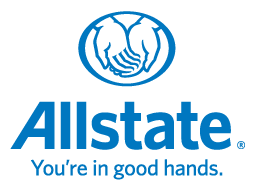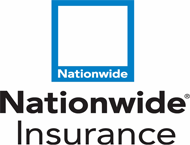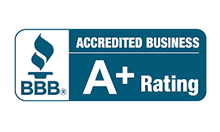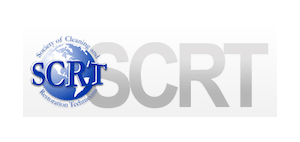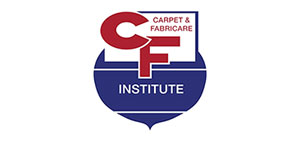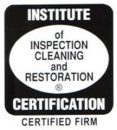Is it safe to sleep in a house with water damage? That’s a question many homeowners face after experiencing floods, leaks, or other water-related issues. While it’s tempting to ignore the problem and hope it goes away, sleeping in a water-damaged house can pose serious risks to your health and safety.
In this article, we’ll explore the dangers of sleeping in a water-damaged house and provide practical tips to minimize the risks. From understanding the hazards associated with water damage to creating a safe sleeping environment, we’ll cover everything you need to know to keep yourself and your family protected.
Key Takeaways:
- Sleeping in a water-damaged house can pose serious risks to your health and safety.
- Mold growth, structural instability, electrical hazards, and contaminated water are just a few of the dangers associated with water damage.
- Creating a safe sleeping environment in a water-damaged house requires inspecting the area, sanitizing affected surfaces, ensuring proper ventilation, using protective gear, and making temporary repairs if necessary.
- Professional help may be necessary in some situations, such as extensive damage, mold infestation, structural issues, and electrical problems.
- Prevention is key to minimizing the risks of water damage. Maintain your house, identify potential sources of water damage, perform regular inspections, and implement necessary repairs and upgrades.
Understanding the Risks of Sleeping in a Water-Damaged House
When it comes to water damage, the risks extend far beyond material damage to your home. There are serious health hazards and safety concerns to consider, especially when it comes to sleeping in a water-damaged house.
Mold growth is a major risk when dealing with water damage. Mold can develop quickly, and exposure to mold spores can cause respiratory issues, allergies, and other health problems.
Structural instability is another risk associated with water damage. Over time, water can weaken the structural components of a building, causing floors, walls, and ceilings to collapse.
Electrical hazards are also a concern in a water-damaged house. Water can damage electrical wiring, causing short circuits and electrical fires. Additionally, standing water can conduct electricity and pose an electrocution hazard.
Contaminated water can also be a risk in a water-damaged house. Floodwaters can contain harmful bacteria, fungi, chemicals, and other contaminants that can pose a serious health risk.
To protect your health and safety, it is essential to address water damage promptly and take the necessary precautions when sleeping in a water-damaged house.
Ensuring a Safe Sleeping Environment in a Water-Damaged House
Creating a safe sleeping environment is crucial when dealing with water damage in your house. Here are some precautionary measures and steps to take:
- Inspect the area: Before going to bed, inspect the room thoroughly to identify any signs of water damage, such as damp surfaces or musty smells.
- Sanitize affected surfaces: Use a solution of bleach and water to sanitize affected surfaces and prevent the growth of harmful bacteria and mold. Make sure to wear protective gloves and a safety mask when applying the solution.
- Ensure proper ventilation: Open windows or use a fan to increase ventilation in the room. This will help reduce moisture and prevent the growth of mold and mildew.
- Use protective gear: Wear protective gear such as gloves, waterproof boots, and masks to avoid direct contact with contaminated water or mold.
- Implement temporary repairs if necessary: If you notice any leaks or damage, implement temporary repairs to prevent further water intrusion. This could include placing buckets under leaks or using plastic sheeting to cover exposed areas.
By taking these precautionary measures, you can create a safe sleeping environment and minimize the risks of potential health hazards.
Professional Help: When to Call in the Experts
While it’s possible to tackle small water damage problems on your own, more extensive damage may require professional assistance. Water damage restoration and remediation services can help you address complex issues and restore your home to a safe and livable condition.
If you’re unsure whether you need professional help, consider the following scenarios:
| Scenario | Action Required |
|---|---|
| Extensive water damage | Call in professionals for water damage restoration and mitigation services. |
| Mold infestation | Hire certified mold remediation specialists. |
| Structural issues | Contact a professional inspector to assess the damage and recommend the necessary repairs. |
| Electrical problems | Seek the assistance of a licensed electrician to address the problem safely. |
It’s crucial to ensure that you hire experienced and certified professionals to provide quality services. Remember, the safety of your home and family is at stake.
Steps to Prevent Future Water Damage and Ensure a Safe Living Environment
Preventing future water damage is key to ensuring the safety of your home and family. By taking proactive measures, you can reduce the risk of water damage and protect your property from costly repairs. Here are some tips to help you prevent water damage:
- Regularly inspect your plumbing system, including pipes, faucets, and water supply lines, and repair any leaks immediately.
- Clean your gutters and downspouts regularly to ensure proper water flow and prevent backup.
- Ensure proper drainage around your home’s foundation by grading the land away from the house and installing a French drain if needed.
- Install water detection devices in your home to alert you to any water leaks or flooding.
- Perform regular maintenance on your appliances that use water, such as your dishwasher and washing machine.
By implementing these preventative measures, you can mitigate the risk of water damage and keep your home and family safe.
Regular inspections are also crucial to preventing water damage. By checking your home for signs of damage or wear, you can catch potential issues early and prevent them from becoming bigger problems. Here are some areas to inspect regularly:
- Roof: Check for loose or damaged shingles and ensure proper drainage.
- Windows and doors: Look for signs of leaks or damage around the frames and reseal if necessary.
- Basement and crawl space: Inspect for cracks or damage in the foundation and ensure proper ventilation and drainage.
- Attic: Check for signs of leaks or damage in the roof and ensure proper insulation.
Regular maintenance and inspections can go a long way in preventing water damage and ensuring a safe living environment for you and your family.
Conclusion
As you can see, sleeping in a water-damaged house can pose serious risks to your health and property. It is crucial to take necessary precautions and address water damage promptly and effectively to prevent mold growth, structural instability, and other hazards. By implementing the tips and precautionary measures discussed in this article, you can create a safe sleeping environment and protect yourself and your loved ones. Remember to seek professional help when needed and prioritize regular maintenance and inspections to prevent future water damage. Stay safe and take care of your home!
FAQ
Are there health risks associated with sleeping in a water-damaged house?
Yes, sleeping in a water-damaged house can pose various health hazards. The presence of mold can cause respiratory issues, allergies, and other illnesses. Contaminated water can lead to infections, and structural damage can increase the risk of accidents. It is essential to address these risks promptly.
How can I create a safe sleeping environment in a water-damaged house?
To create a safe sleeping environment, start by inspecting the area for any visible damage or signs of mold. Sanitize affected surfaces, ensure proper ventilation, and use protective gear such as masks and gloves. If needed, implement temporary repairs, such as covering leaks. Regularly monitor the environment for any changes.
When should I call in professionals for water damage restoration?
It is advisable to seek professional assistance for water damage restoration in scenarios such as extensive damage, mold infestation, structural issues, or electrical problems. Certified and experienced professionals can properly assess the situation, provide effective remediation services, and ensure your safety and the restoration of your property.
What steps can I take to prevent future water damage and maintain a safe living environment?
To prevent future water damage, be proactive in maintaining your house. Regularly inspect and address potential sources of water damage, such as leaky pipes or roofs. Perform regular maintenance tasks like cleaning gutters and drains. Consider installing water detection systems and ensuring proper insulation. These measures will help mitigate the risk of future damage and maintain a safe living environment.
What is the importance of addressing water damage promptly?
Addressing water damage promptly is crucial to prevent further deterioration of the property and the associated health risks. Delayed action can lead to mold growth, structural instability, and electrical hazards. By taking immediate steps to address water damage, you can protect your health, prevent additional expenses, and ensure a safe living environment.





